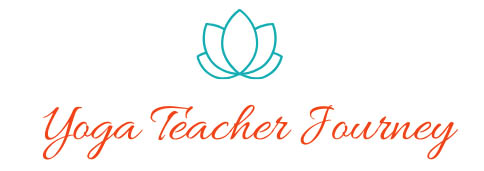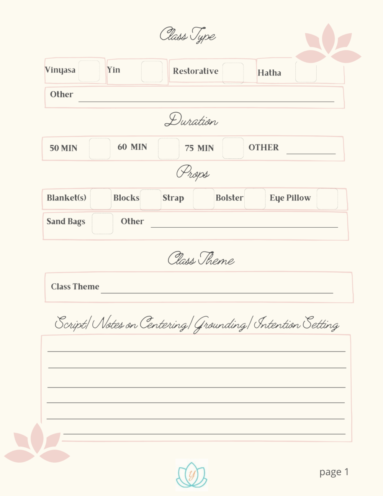Savasana (Corpse Pose) is more than just a final relaxation pose in your sequence of asanas. Taught correctly, Savasana will send your students into a deeply blissful state, allowing them to completely relax their minds as well as their bodies.
I’ve often told students that Savasana is said to be the most important of all asanas; the time when they take in all the benefits of their yoga practice. Although this is true, there are many more benefits to practicing Savasana.
- Much like Restorative yoga, Savasana facilitates relaxation of the muscles and gives space to quiet the mind.
- Using gentle cues, the parasympathetic nervous system (rest and digest) is activated allowing them to rest in a profoundly healing state.
- Just five to ten minutes of Savasana can rejuvenate the body and bring peace and clarity to the mind.
- This counteracts the effects of chronic stress – the fight, freeze, flight response (sympathetic nervous system) we find ourselves in most of the time.
Using the techniques below, you’ll be able to guide your students into deep relaxation. You can of course, simply cue your students into the physical alignment of corpse pose and allow them to be. However, in my opinion they will experience much greater benefits by being guided properly.
WHERE TO BEGIN
It all starts with knowing when to begin Savasana. As a rule of thumb, at least ten percent of the class should be devoted to Savasana. Depending on the length of the class this could be anywhere from five to ten minutes or more.
Begin cueing students by letting them know you are preparing for this part of the class.
- Dim the lights
- Turn off or lower the volume of your music
- Adjust the cadence of your voice
- If you choose to continue music, make sure it is meditative, instrumental only, with no lyrics during Savasana.
The time begins when students have arrived in the physical posture, using any props you may offer for them to become as warm and comfortable as they can be. If available, you can suggest the use of a bolster under the knees, a blanket as a pillow for their head, and/or a blanket to cover themselves with. Eye pillows are always nice, and even sandbags – if you have the luxury of having them available in your studio.
If you plan to offer physical adjustments, this is a good place to ask the question. Tell students that you will be offering adjustments in Savasana to help relax their muscles, and if they would prefer not have the assists to raise their hand (or use another method suitable for you). More on physical adjustments below.
At this point, students can be reminded to begin drawing their attention inward and focusing on their breath. You might suggest that they notice how they are feeling now as compared to when they began their practice. If you like, you can cue a gentle Pranayama such as Sama Vritti (equal breath) or Dirga (three-part breath).
GUIDING STUDENTS DEEPER
Now, is the time to begin guiding students into deeper relaxation. There is a plethora of methods for guiding students in Savasana – some of which are scripted or linked below. You can adopt a “go to” method, such as a body scan, that feels most authentic to you, and utilize other methods as they seem suitable to apply to your theme (such as a Chakra or Kosha guided meditation to culminate a series).
You might choose an appropriate visualization, a tense and release, Sa Ta Na Ma, Touch and Space, Gratitude, or another method of your liking.
Remember to allow time for silence following your verbal guidance. If you are offering physical adjustments (see below), you’ll want to begin as soon as you are finished speaking to allow enough time for each student to rest in a quiet space.
Here are a few scripts for guided meditations not linked above:
BODY SCAN MEDITATION
Guide students to draw their awareness inside and follow the path of their breath, in through the nose and out through the nose. Continue to cue them to soften their forehead and the space between their eyes. To soften their cheekbones and their jaw, creating space between their teeth, and releasing the tongue from the roof of their mouth. Relax the muscles in their neck. Take a deep breath, fill the chest with breath and on the exhale release the shoulders down into the mat. Continue to guide them to release all tension in their elbows, wrists, and fingers. Take another deep breath and fill the belly with breath, and on the exhale allow the hips to sink down into the mat. Bring their awareness to the support beneath their body and the places that are touched and supported by the mat and the earth beneath them. Cue the students to relax their legs, their knees, and each toe.
WHITE LIGHT MEDITATION
In this relaxation exercise, slowly guide students to imagine a white light that begins at the crown of the head, and moves to the third eye, the nose, the chin, throat center, heart center, right shoulder, elbow, wrist, fingers, back to heart center, left shoulder, elbow, wrist, fingers, back to heart center, naval, right hip, knee, ankle, toes, back to naval, left hip, knee, ankle, toes, back to naval, heart center, throat center, third eye, and back out through the crown of the head.

HANDS-ON ADJUSTMENTS IN SAVASANA
As stated earlier, always get permission before touching the student in any posture, including Savasana. With permission, you can follow a few of the suggested adjustments to assist students into deeper relaxation. There are many options of which a few are listed here.
When approaching a student in Savasana, be sure they are aware of your presence. You can breathe using an audible Ujjayi breath or make subtle sounds, if your footsteps are not perceptible as you approach.
- Use your hands to very gently press down on the students shoulders; this can be done by pressing both shoulders at once, or you can use a kneading motion and alternate shoulders a few times.
- Carefully lift the student’s head by starting at the base of the neck (top of the shoulders) and slowly elongating the neck as you slide your fingers up each side of the cervical spine, cradling the head then gently lowering it back down.
- Gently massage the student’s temples, in a circular motion. Slide your thumbs or fingers over the student’s brow and end by softly tapping the area of the third eye.
- If time permits, you can lift each leg, gently rocking it and then pulling it towards you before placing it back down.
- The same can be done with the arms, usually following the shoulder release.
GUIDING STUDENTS OUT OF SAVASANA
To bring their awareness back to the room, you may choose to use a chime, singing bowl, or soft voice cueing students to begin deepening their breath. Ask them to slowly roll onto one side and take a moment or two there before pressing up to an easy seated position, with eyes closed or a soft downward gaze.
Ask students to bring their hands together in the Anjali (prayer) mudra and to bow their heads to their hearts honoring themselves. Consider closing with the “Om” chant and “the light in me honors the light in each of you,” “Namaste,” (I bow to you), or any suitable closing that you prefer to teach.
As a special treat, indulge yourself in Savasana by listening to this Self-Care Guided Meditation for Yoga Teachers, created just for you!
Read about guiding beginner students into Savasana here.
Enjoy these two Savasana scripts by Yoga International.
Additionally, you might enjoy Yoga and Progressive Relaxation Response by Vie Binga and Tim Ganley





